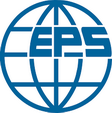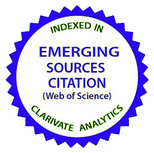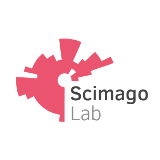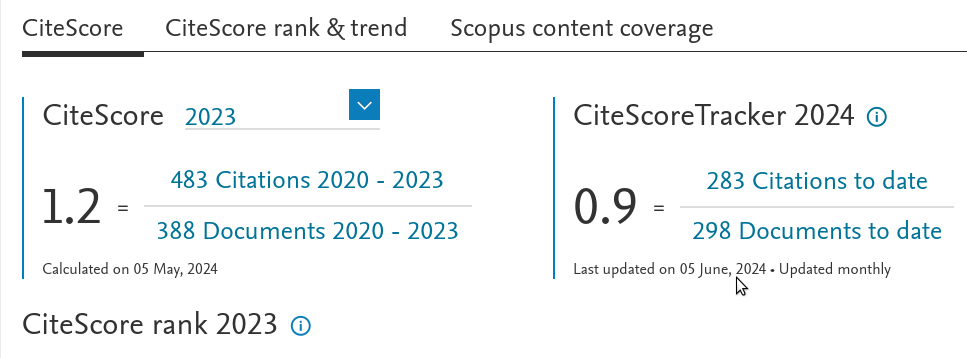SPR in Cesium Halide Thin Films Due to Embedded Elliptic Cesium Metal Nano-Particles
DOI:
https://doi.org/10.15407/ujpe63.9.824Keywords:
alkali halides, thin films, X-ray diffraction, UV-visible spectroscopyAbstract
Cesium nanorods embedded in cesium halides (CsCl, CsBr, and CsI) show surface plasmon resonance (SPR) absorption peaks. The size and shape of these cesium nanorods in the cesium halide matrix evolve with time, which gives some uncontrollable data for comparing with the theory. The theory used here was developed by R. Gans. It leads to the good match between experiment and theory for Cs–Cs halide nanocomposites.
References
<li>S. Asaka, M. Itoh, M. Kamada. Ultraviolet light amplification within a nanometer-sized layer. Phys. Rev. B 63, 081104(R) (2001).
</li>
<li>M. Cremona, J.A.M. Perira, S. Pelli, G.C. Righini. Optical waveguides produced in LiF by MeV ion beam bombardment. Appl. Phys. Lett. 81, 4103 (2002).
<a href="https://doi.org/10.1063/1.1524302">https://doi.org/10.1063/1.1524302</a>
</li>
<li>H. Fujita, K. Yamauchi, A. Akasaka, H. Irie, S. Masunaga. Pressure dependence of direct band gap at ? point in solids. J. Phys. Soc. Japan 68, 1994 (1999).
<a href="https://doi.org/10.1143/JPSJ.68.1994">https://doi.org/10.1143/JPSJ.68.1994</a>
</li>
<li>P.V. Mitchell, D.A. Wiegand, R. Simoluchowski. Formation of F-centers in KCl by X-rays. Phys. Rev. 121, 484 (1961).
<a href="https://doi.org/10.1103/PhysRev.121.484">https://doi.org/10.1103/PhysRev.121.484</a>
</li>
<li>B.R. Sever, N. Kristianpollar, F.C. Brown. F-center production in alkali halide crystals by monochromatic X-ray and ultraviolet radiation. Phys. Rev. B 34, 1257 (1986).
<a href="https://doi.org/10.1103/PhysRevB.34.1257">https://doi.org/10.1103/PhysRevB.34.1257</a>
</li>
<li>J.R. Maldonato, Z. Liu, D.H. Dowell, R.E. Kirby, Y. Sun, P. Pianetta, F. Pease. Electron sources utilizing thin CsBr coatings. Microelectronic Engineering 86, 529 (2009).
<a href="https://doi.org/10.1016/j.mee.2008.11.063">https://doi.org/10.1016/j.mee.2008.11.063</a>
</li>
<li>A. Buzulutskov, E. Shafer, A. Breskin, R. Chechik, M. Prager. The protection of K–Cs–Sb photocathodes with CsBr films. Nucl. Instr. and Meth. A 400, 173 (1997).
<a href="https://doi.org/10.1016/S0168-9002(97)00990-X">https://doi.org/10.1016/S0168-9002(97)00990-X</a>
</li>
<li>B.K. Singh, E. Shefer, A. Breskin, R. Chechik, N. Arraham. CsBr and CsI UV photocathodes: New results on quantum efficiency and aging. Instr. & Meth. A 454, 364 (2000).
<a href="https://doi.org/10.1016/S0168-9002(00)00485-X">https://doi.org/10.1016/S0168-9002(00)00485-X</a>
</li>
<li>G. Yoshikawa, M. Kiguchi, K. Ueno, A. Saiki. Visible light photoemission and negative electron affinity of single-crystalline CsCl thin films. Surf. Sci. 544, 220 (2003).
<a href="https://doi.org/10.1016/j.susc.2003.08.016">https://doi.org/10.1016/j.susc.2003.08.016</a>
</li>
<li> S. Tsuchiya, M. Green, R.R.A. Syms. Structural fabrication using cesium chloride island arrays as a resist in a fluorocarbon reactive ion etching plasma. Electrochem. Solid State Lett. 3 (1), 44 (2000).
<a href="https://doi.org/10.1149/1.1390953">https://doi.org/10.1149/1.1390953</a>
</li>
<li> K. Kumar, P. Arun. Defect diffusion assisted formation of cesium metal clusters in Cesium halide thin films. J. Taibah Univ. Sci. 11 1230 (2017).
<a href="https://doi.org/10.1016/j.jtusci.2016.12.002">https://doi.org/10.1016/j.jtusci.2016.12.002</a>
</li>
<li> K. Kumar, P. Arun, C.R. Kant, N.C. Mehra, L. Makinistian. E.A. Albanesi. Effect of residual stress on the optical properties of CsCl thin films. J. Phys. Chem. Sol. 71, 163 (2010).
<a href="https://doi.org/10.1016/j.jpcs.2009.10.013">https://doi.org/10.1016/j.jpcs.2009.10.013</a>
</li>
<li> K. Kumar, P. Arun, C.R. Kant, B.K. Juluri. Metal cluster's effect on the optical properties of cesium bromide thin films. Appl. Phys. Lett. 100, 243106 (2012).
<a href="https://doi.org/10.1063/1.4729061">https://doi.org/10.1063/1.4729061</a>
</li>
<li> K. Kumar, P. Arun, C.R. Kant, V. Mathew. The effect of cesium metal clusters on the optical properties of cesium iodide thin films. Appl. Phys. A 99, 305 (2010).
<a href="https://doi.org/10.1007/s00339-009-5532-4">https://doi.org/10.1007/s00339-009-5532-4</a>
</li>
<li> A.B. Scott, W.A. Smith. The thermal stability of F-centers in alkali halides. Phys. Rev. 83, 982 (1951).
<a href="https://doi.org/10.1103/PhysRev.83.982">https://doi.org/10.1103/PhysRev.83.982</a>
</li>
<li> V. Amendola, R. Pilot, M. Frasconi, O.M. Marago. M.A. Iati. Surface plasmon resonance in gold nanoparticles: a review. J. Phys.: Cond. Matter. 29, 20 (2017).
<a href="https://doi.org/10.1088/1361-648X/aa60f3">https://doi.org/10.1088/1361-648X/aa60f3</a>
</li>
<li> C.F. Bohren, D.R. Huffman. Absorption and Scattering of Light by Small Particles (Wiley, 1983) [ISBN: 9783527618156].
</li>
<li> M. Hu, J. Chen, Z. Y. Li, L. Au, G.V. Hartland, X. Li, M. Arquez, Y. Xia. Chem. Gold nanostructures: engineering their plasmonic properties for biomedical applications. Soc. Rev. 35, 1084 (2006).
<a href="https://doi.org/10.1039/b517615h">https://doi.org/10.1039/b517615h</a>
</li>
<li> R. Gans. ? Uber die form ultramikroskopischer silberteilchen. Ann. Phys. 47, 270 (1915).
<a href="https://doi.org/10.1002/andp.19153521006">https://doi.org/10.1002/andp.19153521006</a>
</li>
<li> R. Gans. ? Uber die form ultramikroskopischer goldteilchen. Ann. Phys. 37, 881 (1912).
<a href="https://doi.org/10.1002/andp.19123420503">https://doi.org/10.1002/andp.19123420503</a>
</li>
<li> S. Link, M.A. El-Sayed. Size and temperature dependence of the plasmon absorption of colloidal gold nanoparticles. J. Phys. Chem. B 103, 4212 (1999).
<a href="https://doi.org/10.1021/jp984796o">https://doi.org/10.1021/jp984796o</a>
</li>
<li> N.V. Smith. Optical constants of rubidium and cesium from 0.5 to 4.0 eV. Phys. Rev. B 2, 2840 (1970).
<a href="https://doi.org/10.1103/PhysRevB.2.2840">https://doi.org/10.1103/PhysRevB.2.2840</a>
</li>
<li> E.D. Palik. Handbook of Optical Constants of Solids (Academic Press, 1985) [ISBN: 9780125444224].
</li></ol>
Downloads
Published
How to Cite
Issue
Section
License
Copyright Agreement
License to Publish the Paper
Kyiv, Ukraine
The corresponding author and the co-authors (hereon referred to as the Author(s)) of the paper being submitted to the Ukrainian Journal of Physics (hereon referred to as the Paper) from one side and the Bogolyubov Institute for Theoretical Physics, National Academy of Sciences of Ukraine, represented by its Director (hereon referred to as the Publisher) from the other side have come to the following Agreement:
1. Subject of the Agreement.
The Author(s) grant(s) the Publisher the free non-exclusive right to use the Paper (of scientific, technical, or any other content) according to the terms and conditions defined by this Agreement.
2. The ways of using the Paper.
2.1. The Author(s) grant(s) the Publisher the right to use the Paper as follows.
2.1.1. To publish the Paper in the Ukrainian Journal of Physics (hereon referred to as the Journal) in original language and translated into English (the copy of the Paper approved by the Author(s) and the Publisher and accepted for publication is a constitutive part of this License Agreement).
2.1.2. To edit, adapt, and correct the Paper by approval of the Author(s).
2.1.3. To translate the Paper in the case when the Paper is written in a language different from that adopted in the Journal.
2.2. If the Author(s) has(ve) an intent to use the Paper in any other way, e.g., to publish the translated version of the Paper (except for the case defined by Section 2.1.3 of this Agreement), to post the full Paper or any its part on the web, to publish the Paper in any other editions, to include the Paper or any its part in other collections, anthologies, encyclopaedias, etc., the Author(s) should get a written permission from the Publisher.
3. License territory.
The Author(s) grant(s) the Publisher the right to use the Paper as regulated by sections 2.1.1–2.1.3 of this Agreement on the territory of Ukraine and to distribute the Paper as indispensable part of the Journal on the territory of Ukraine and other countries by means of subscription, sales, and free transfer to a third party.
4. Duration.
4.1. This Agreement is valid starting from the date of signature and acts for the entire period of the existence of the Journal.
5. Loyalty.
5.1. The Author(s) warrant(s) the Publisher that:
– he/she is the true author (co-author) of the Paper;
– copyright on the Paper was not transferred to any other party;
– the Paper has never been published before and will not be published in any other media before it is published by the Publisher (see also section 2.2);
– the Author(s) do(es) not violate any intellectual property right of other parties. If the Paper includes some materials of other parties, except for citations whose length is regulated by the scientific, informational, or critical character of the Paper, the use of such materials is in compliance with the regulations of the international law and the law of Ukraine.
6. Requisites and signatures of the Parties.
Publisher: Bogolyubov Institute for Theoretical Physics, National Academy of Sciences of Ukraine.
Address: Ukraine, Kyiv, Metrolohichna Str. 14-b.
Author: Electronic signature on behalf and with endorsement of all co-authors.

















